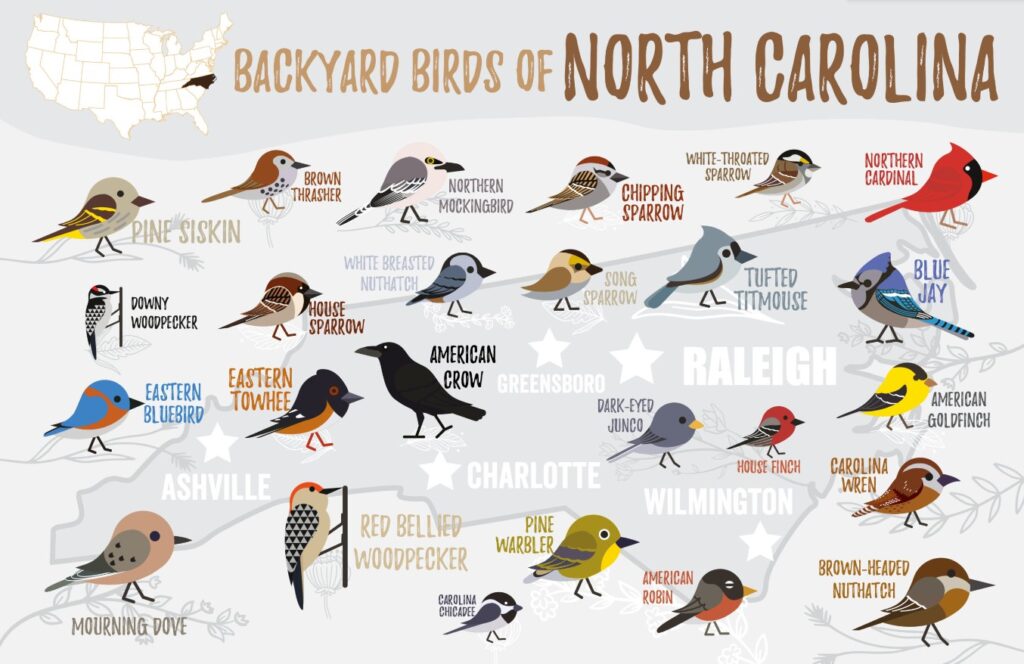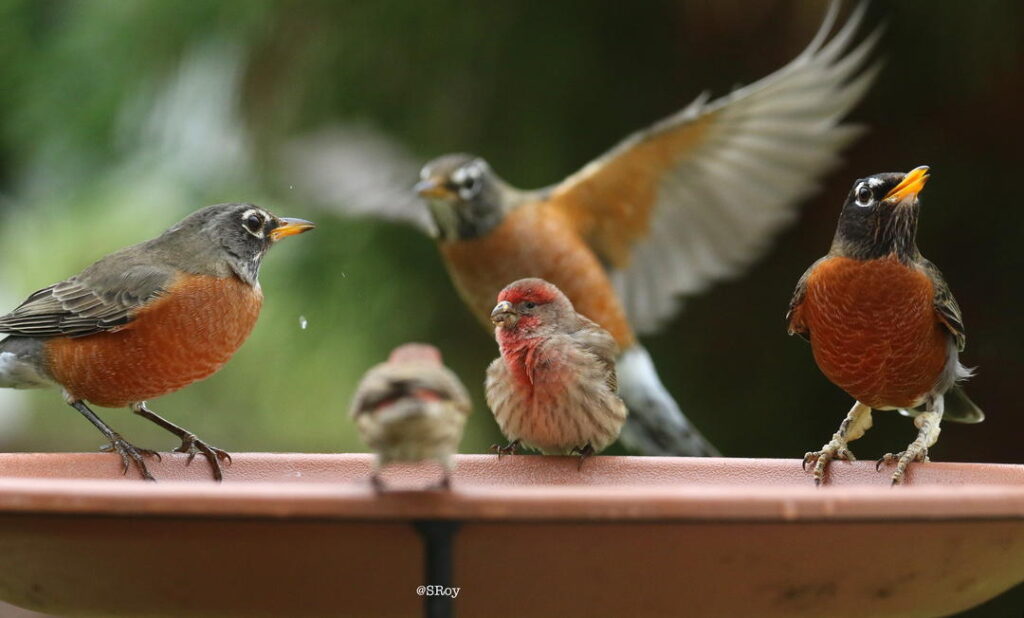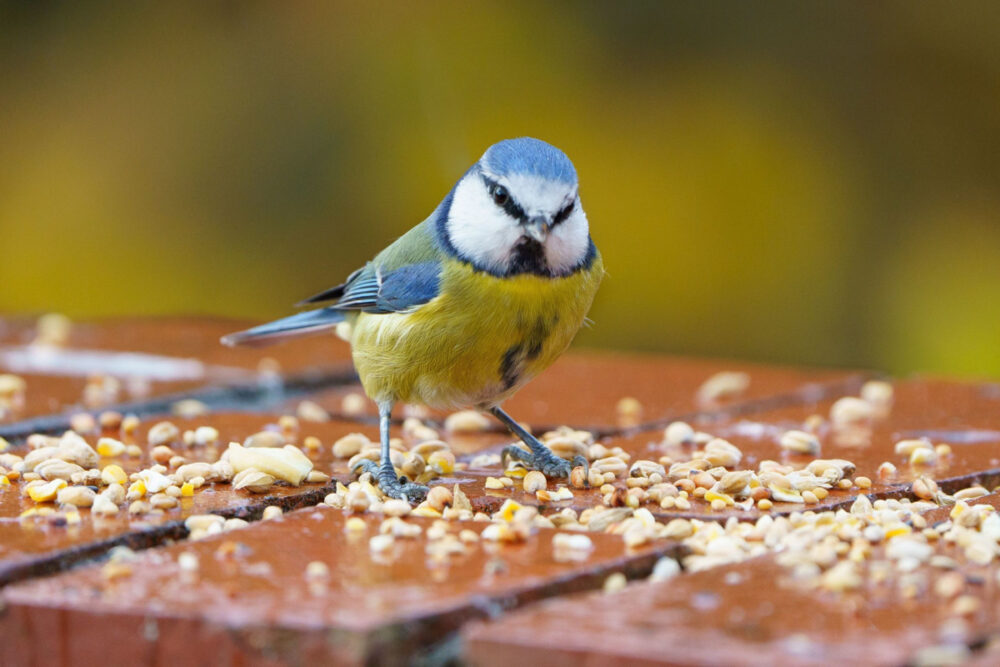Crafting your own birdseed in North Carolina is an uncomplicated endeavor that requires a few basic steps. Get the components you need, such as organic sunflower seeds, millet, white proso millet, cracked corn, and oats for a balanced blend of nutrients.
Once mixed together in equal parts for optimal health benefits for birds to feed on it – why not add some dried fruits or nuts as treats? Enjoy watching local feathered friends happily feast on your handiwork with delight.
Once you’ve blended all the ingredients, spread them out onto a baking sheet and place it in an oven that has been preheated to 250°F. Stir the mixture every 5 minutes for even cooking. When your bird seed is finished baking, remove it from the oven and transfer it into another container to cool completely before adding it to any feeders.
For those planning on stocking up for the season ahead, store any additional bird seed in an airtight container away from heat and moisture. To keep your feathered friends happy and well-fed, refresh their feeders every two weeks or so with fresh food.
Not only is making bird seed a fun project that’s sure to draw birds of all kinds to your North Carolina backyard but also provides them with much-needed nutrients! Create a safe haven for wildlife right in your own outdoor space today.
Most Common Birds in North Carolina

Source: birdwatchingacademy.com
North Carolina is home to a variety of birds, from tiny hummingbirds to majestic eagles. Exploring nature in North Carolina is sure to bring many feathered friends into view – from the American robin and blue jay, to beautiful birds like the tufted titmouse, eastern bluebird, wild turkey, and cardinal.
Other frequent fliers include the northern mockingbird, red-bellied woodpecker, chickadee, brown thrasher or Baltimore oriole. And if you’re lucky enough…you may even glimpse a vibrant American goldfinch!
North Carolina is a bird-watchers paradise, boasting an abundance of species such as Canada geese, mallards, wood ducks, and green-winged teal. In addition to these waterfowls, sandpipers, and plovers can be spotted along the Outer Banks while barred owls and great horned owls find refuge in our deeper woods. It’s no wonder that this state brings so many enthusiasts out into nature!
If you’re searching for a spectacular birding experience, North Carolina is the perfect destination!
Our magnificent terrain and favorable climate host majestic raptors like red-tailed hawks, ospreys, and peregrine falcons. Whether you’re an avid birder or just starting out with this exciting hobby – there’s something here for everyone! To get more info on birds in NC turn to Audubon NC’s website.
And remember: visit your local wildlife refuge or use ebird.org to find amazing hot spots near you. Get ready to embark on some truly incredible adventures as a birdwatcher in North Carolina – Happy Birding!
Bird Feeder Tips

Source: perkypet.com
- When selecting a spot for your bird feeder, be sure it is safe from any potential predators such as cats, hawks, and other birds of prey.
- To attract various types of birds to your feeder, choose different varieties of seed mixes that appeal to them specifically.
- Maintain the area around the feeder clean by removing plant debris and all sources of mold or bacteria in order to provide an inviting home base for our feathered friends!
- Supply your feathered friends with a flow of fresh water for drinking and bathing, as birds love the sound of splashing droplets.
- Place bird feeders far away from windows or other glossy surfaces that could startle them when flying nearby.
- Regularly monitor your feeder for any signs of pests such as ants or mice – to ensure birds can access food without being disturbed!
- To guarantee that the birds have access to healthy food sources, switch out your old birdseed for new seeds regularly.
- Every couple of weeks sanitize your feeders by washing them with warm sudsy water and then rinsing them with clean water thoroughly afterward.
- Familiarise yourself with local regulations on attracting birds since some species may be deemed as nuisances in specific areas.
- Make sure to utilize a squirrel-proof bird feeder in order to keep away any other pesky critters from your seed supply!
- Hang the feeder in an area that receives no less than six hours of direct sunlight each day, as birds are attracted by sunlit areas for their food sources.
- Investing in a heated bird bath during colder months may be beneficial so that birds can have an accessible water source available all year round, both for drinking and bathing purposes alike.
If you want to boost your backyard birds, plant some native flowers and shrubs around the bird feeder. Not only will this create a beautiful setting for them to live in but also provide protection from predators. Additionally, install an appropriate nesting box nearby so the birds can stay even longer!
Finally, be sure to take your time and savor the moment – bird-watching can be an incredibly fulfilling experience! Enjoy the tranquil beauty of nature right in your own backyard.
What is the Best Type of Bird Feeder?

Source: gardenexperiments.com
If you’re looking to attract certain birds, selecting the right type of bird feeder is paramount. Tube feeders, hopper feeders and platform feeders are all great options for a range of species – so do your research first to determine which one will work best in luring the feathered friends that you desire!
How Often Should I Clean My Bird Feeders?
For the well-being of feathered friends, it’s essential to clean bird feeders on a regular basis every couple weeks – or when they’re visibly covered in dirt and other material. By maintaining a tidy environment for birds to eat from, you’ll ensure that their meals remain safe and nutritious!
Is It Ok to Feed Birds During the Winter?
When temperatures drop and food becomes scarce, providing birds with high-energy foods like sunflower seeds or suet is an effective way to keep them warm and energized. Feeding birds during the winter can be a great source of sustenance that helps ensure their survival!
What Types of Birds Can I Expect to See in North Carolina?

Source: nc.audubon.org
North Carolina is blessed with a wide array of birds that call the state home, ranging from doves to woodpeckers and cardinals, hummingbirds to majestic raptors like red-tailed hawks and ospreys. For more insight into the amazing avian life in your area, be sure to visit Audubon NC’s website today!
Are There Any Other Tips for Attracting Birds to My Feeder?
Absolutely! Attracting birds to your yard is easier than you think. Consider installing a bird bath or nesting box nearby, planting native shrubs and flowers around the feeder area, and providing fresh water for drinking as well as bathing. You can also explore ebird.org to find excellent bird-watching spots near you!





















